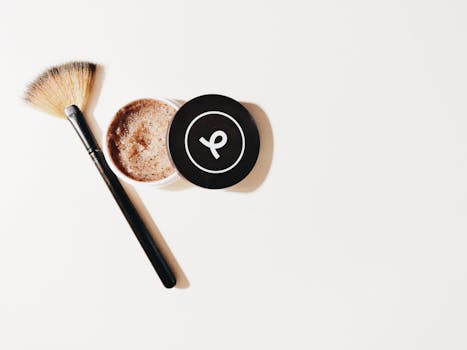Understanding Chemical Exfoliants: AHA and BHA
Chemical exfoliants have gained significant popularity in the skincare industry, particularly for their ability to enhance skin texture and promote a radiant complexion. Among the most commonly used chemical exfoliants are Alpha Hydroxy Acids (AHAs) and Beta Hydroxy Acids (BHAs). These acids work by dissolving the bonds that hold dead skin cells together, allowing for easier removal and revealing fresher skin underneath.
What Are AHA and BHA?
AHAs are water-soluble acids derived from fruits and milk, making them ideal for surface exfoliation. They are particularly effective for dry or sun-damaged skin. Common types of AHAs include:
- Glycolic Acid: Derived from sugar cane, it is the most potent AHA.
- Lactic Acid: Found in milk, it is gentler and suitable for sensitive skin.
- Citric Acid: Sourced from citrus fruits, it helps brighten the skin.
On the other hand, BHAs are oil-soluble acids that penetrate deeper into the pores, making them effective for oily and acne-prone skin. The most well-known BHA is Salicylic Acid, which helps to unclog pores and reduce inflammation.
The Benefits of Weekly Exfoliation
Incorporating a chemical exfoliant into your skincare routine once a week can yield numerous benefits for your body skin. Here are some key advantages:
- Improved Skin Texture: Regular exfoliation helps to smooth rough patches and reduce the appearance of bumps.
- Enhanced Radiance: By removing dead skin cells, AHAs and BHAs promote a brighter and more youthful complexion.
- Reduced Ingrown Hairs: Exfoliating can help prevent ingrown hairs, making it particularly beneficial for those who shave or wax.
- Better Product Absorption: Exfoliated skin allows for better penetration of moisturizers and serums, maximizing their effectiveness.
How to Choose the Right Exfoliant
When selecting a chemical exfoliant, consider your skin type and specific concerns. Here are some tips:
- For Dry Skin: Opt for AHAs like glycolic or lactic acid, which hydrate while exfoliating.
- For Oily or Acne-Prone Skin: Choose a BHA like salicylic acid to target clogged pores.
- Sensitive Skin: Look for lower concentrations of AHAs or BHAs and consider patch testing before full application.
Case Studies and Statistics
Research supports the efficacy of chemical exfoliants in improving skin texture. A study published in the Journal of Cosmetic Dermatology found that participants who used a glycolic acid exfoliant twice a week for eight weeks experienced a significant reduction in roughness and an increase in skin hydration levels.
Furthermore, a survey conducted by the American Academy of Dermatology revealed that 70% of participants reported improved skin texture and tone after incorporating chemical exfoliants into their routine. These statistics highlight the transformative effects of regular exfoliation.
How to Incorporate AHA and BHA into Your Routine
To effectively use chemical exfoliants, follow these steps:
- Start Slow: If you are new to chemical exfoliation, begin with a lower concentration and gradually increase as your skin builds tolerance.
- Apply at Night: Use your exfoliant in the evening to minimize sun sensitivity.
- Follow with Sunscreen: Always apply sunscreen during the day, as exfoliated skin can be more susceptible to UV damage.
Conclusion: Renew Your Skin with AHA and BHA
Incorporating a chemical exfoliant with AHA or BHA into your skincare routine once a week can significantly enhance the texture of your body skin. With benefits ranging from improved radiance to reduced ingrown hairs, these acids offer a powerful solution for various skin concerns. By choosing the right exfoliant for your skin type and following a consistent routine, you can achieve smoother, healthier skin. Remember, the key to successful exfoliation is to start slow, listen to your skin, and always protect it from the sun. Embrace the transformative power of chemical exfoliation and enjoy the renewed texture of your body skin.
